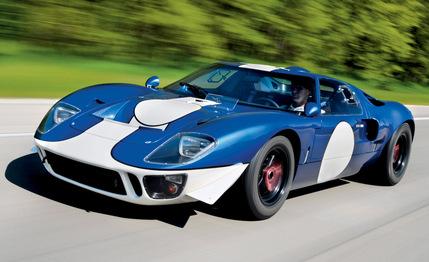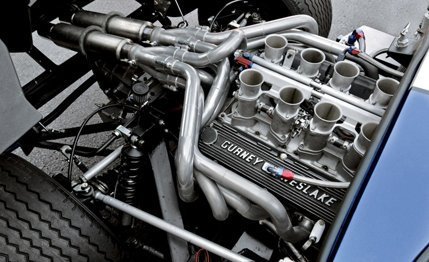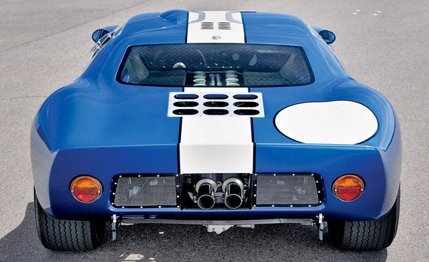
 Specialty File
TESTED
Specialty File
TESTED
In terms of motorsports lore and significance, few cars rate higher than Ford’s GT40, the race car that Henry Ford II built to topple Enzo Ferrari’s domination of the 24-hour Le Mans endurance race. The first GT40 wasn’t successful, but Ford won in 1966 with the Mark II version. Just more than 100 GT40s were built, and each surviving one has become a highly valued collector car easily commanding a seven-figure price today.
Superformance, a South African company that manufactures a line of Shelby Cobra and Daytona coupe replicas, has offered a price solution—its version of a GT40 can be had for “only” $125,000.
This replica is sold without the powertrain, a strategy that circumvents emissions and crash regulations, which the GT40 does not meet. Customers plunk down 80 grand and then add the other bits a la carte.
To keep the experience authentic, Superformance built the new car as close to original as possible, both dimensionally and in terms of construction. In fact, two-thirds of the suspension pieces will bolt right up to the original. Customers can opt to position the shifter in a conventional center location or along the side sill as in the original.


Until a door is opened, only GT40 fanatics will know this isn’t the real thing. The differences inside are subtle, save a few concessions for comfort such as a wider driver’s seat, three 12-volt sockets, and air conditioning.
While a variety of Ford V-8s could fit, it would be heresy to use anything but a 427-cubic-inch V-8, since that’s what first propelled the GT40 to glory at Le Mans. Our test car’s 427 is a bored-and-stroked small-block Windsor 351 with electronic fuel injection and eight glorious intake trumpets.
Built by Keith Craft Performance Engines, this $20,000 mill puts out 520 horsepower. Figure $15,000 for a remanufactured version of the original ZF five-speed gearbox and 10 large to have someone put it all together.
The car we tested weighed 2458 pounds, which is less than an original and enough to endow it with a better power-to-weight ratio than Ford’s own remake of the GT40, the now-discontinued GT.


Consequently, it flies. While the car struggles putting down the power, it still catapults to 60 mph in 3.4 seconds. Ford’s GT gets to 60 a 10th quicker [C/D, January 2004], but as speeds rise, the gap reverses. The Superformance hits 150 mph in just 15.7 seconds compared with 16.9 for the Ford.
But the Superformance still has plenty of vintage-race-car hairiness. At triple-digit speeds, the front end gets light, and the car wanders—just like the real thing. The engine note hammers the eardrums, the throttle pedal is stiff, and the A/C struggles to keep up. But quieter engine intakes and exhausts are available, and owners report that the stiff gearbox frees up with use.
Handling is benign (it pulls 1.00 g on the skidpad and safely understeers). The car feels tight and well made, and the ride is surprisingly acceptable. The brakes are strong, but a transmission malfunction prevented our usual braking test.
Overall, this is a raw car, cleaned up just enough to get it on the street—barely.
Superformance, 6 Autry, Irvine, California 92618; 949-900-1950; www.superformance.com.